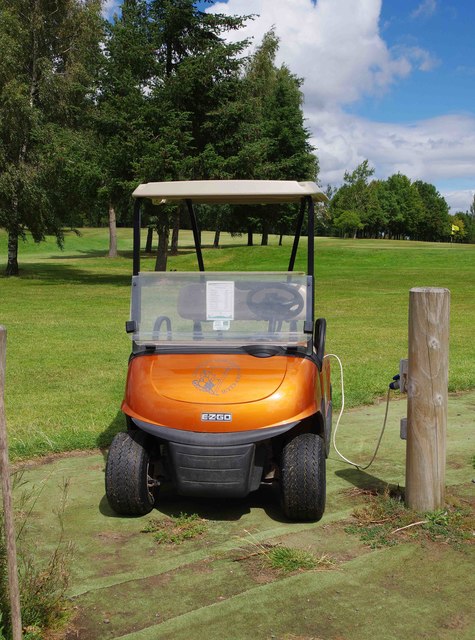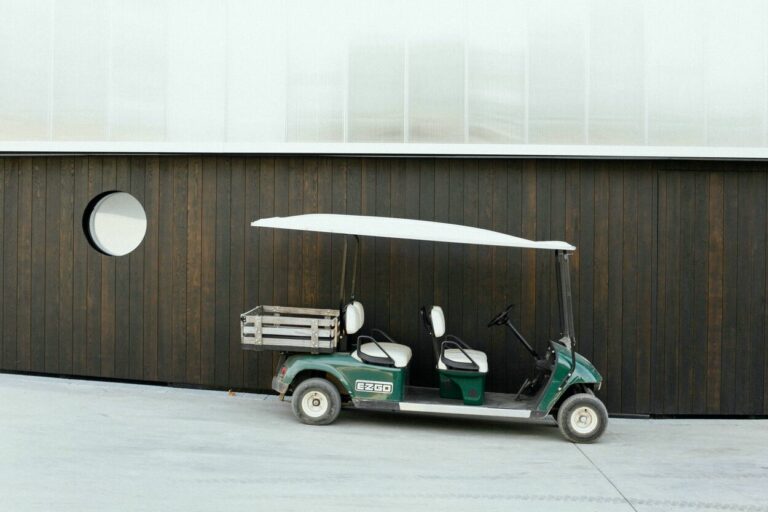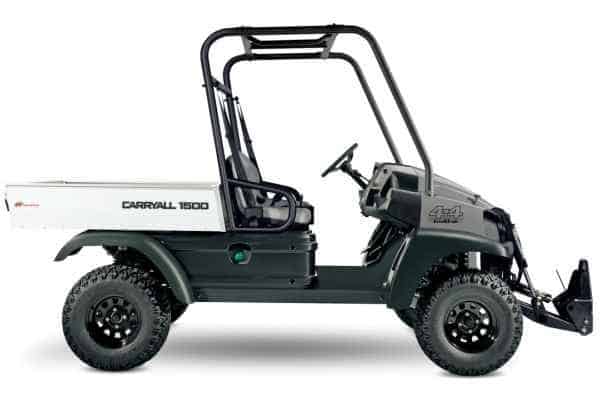How Big is a Golf Cart Garage? (Save a Few Bucks)
As a golf cart owner (or potential golf cart owner), there are some key pieces of equipment you need to keep your cart in top condition. But one that is often overlooked is how to store your cart when not in use or during the off-season.
Typically, a garage size of 10×20 feet will give you space to move around comfortably. But there are some that are as small as 7×15 feet that can store your cart.
There is more to consider than I expected while doing research, but I’ve laid it out here for your convenience to save you some time and hopefully some money as well.
So, let’s dive in.
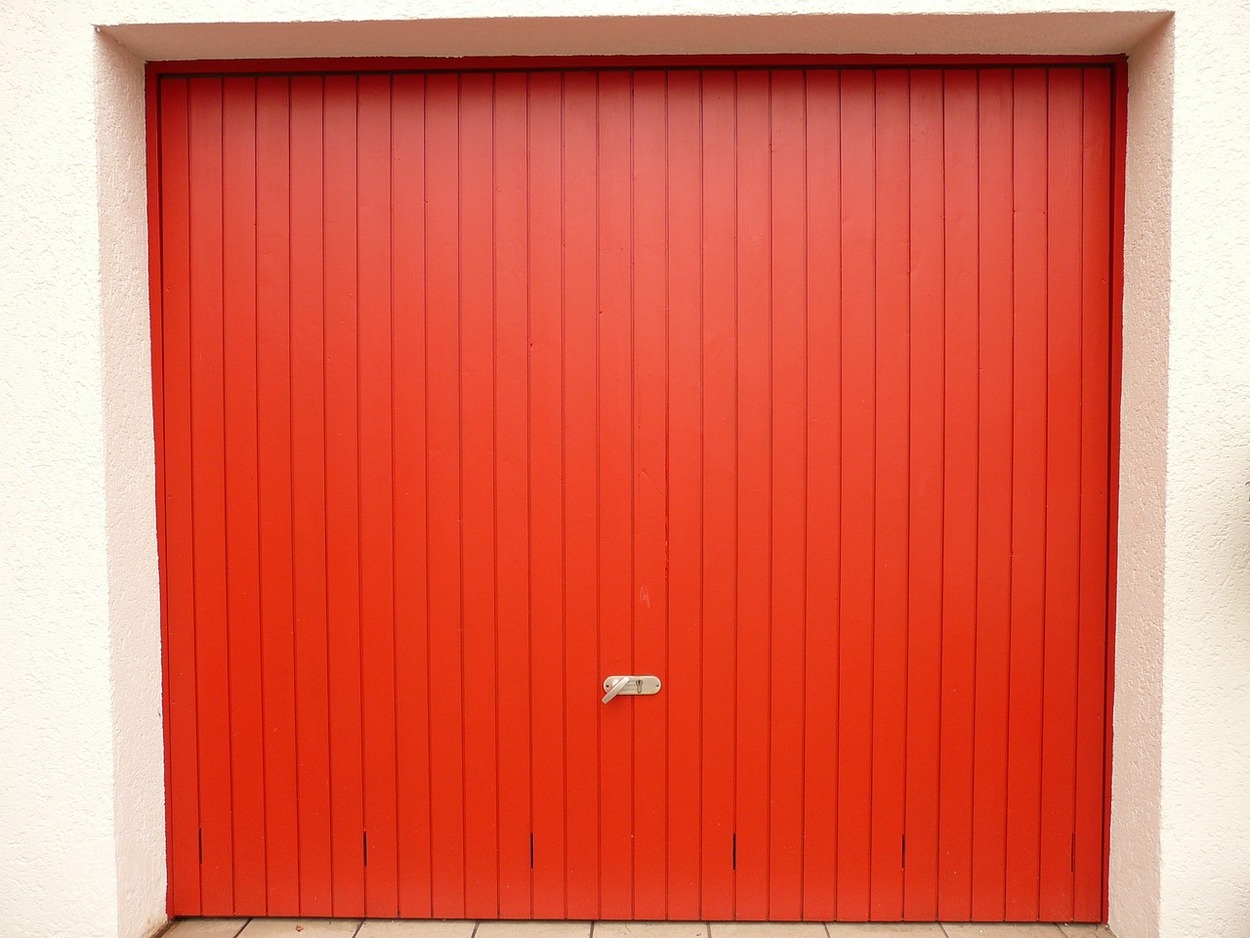
What is the standard size of a golf cart garage?
A standard garage size can range from 7X15 feet to as big as 20X30 feet. But as with most things, the answer depends on your unique needs. There are golfing folks out there who say you can never have too much garage space. Some can be as large as 20X60 feet!
How large your garage will be can depend on how many vehicles you already own, how many bedrooms your house currently has, and how much available land you have on your property.
The question is not what a golf cart garage should be but what kind of garage you want. With that being said, there are some factors you should take into consideration before making your dream golf cart storage space.
Make Sure It’s Legal
For a new building or extension to your home, two key words to remember are zoning laws.
Be familiar with them and how they can affect your construction project. These laws will differ from place to place, so contact your county, local municipal clerk’s office, or similar governing body to see which laws and codes apply to your property.
Give them an idea as to what you wish to build and where. Getting permission may seem boring and tedious, but necessary if you want your new golf cart garage to be legal.
Some details that you may need to give include:
- How far from the property line this new structure will be
- How tall and wide your planned garage is
- Will you also be constructing a driveway, etc?
Building Materials
Once you’ve been given the green light, the next step you’ll need to consider is the building materials. The four most common ones used in garage construction are drywall, wood, concrete, and steel. What you choose is ultimately up to your preferences, such as how it would look alongside your home, the overall appearance, available materials, etc.
However, if you’re looking for durability from year-long elements, experts recommend going with steel. The material is not only weather and pest-resistant but is also the most cost-effective in the long run.
Whereas initial costs might seem a bit steep, keep in mind how little maintenance a steel golf cart garage will require years down the road.
Don’t forget Ventilation
If all of this sounds like too much work, and you already have enough garage space to store your golf cart, at the very least, keep the area well-ventilated. This won’t be too much of a concern for gas-powered golf carts, but electric models need an HVAC system that’s in proper working order.
At times, hydrogen gas will be emitted during the battery charging process. This gas can be deadly to humans in large amounts through asphyxiation, fire, or explosions. Hydrogen can get into the smallest cracks and quickly travel throughout your home.
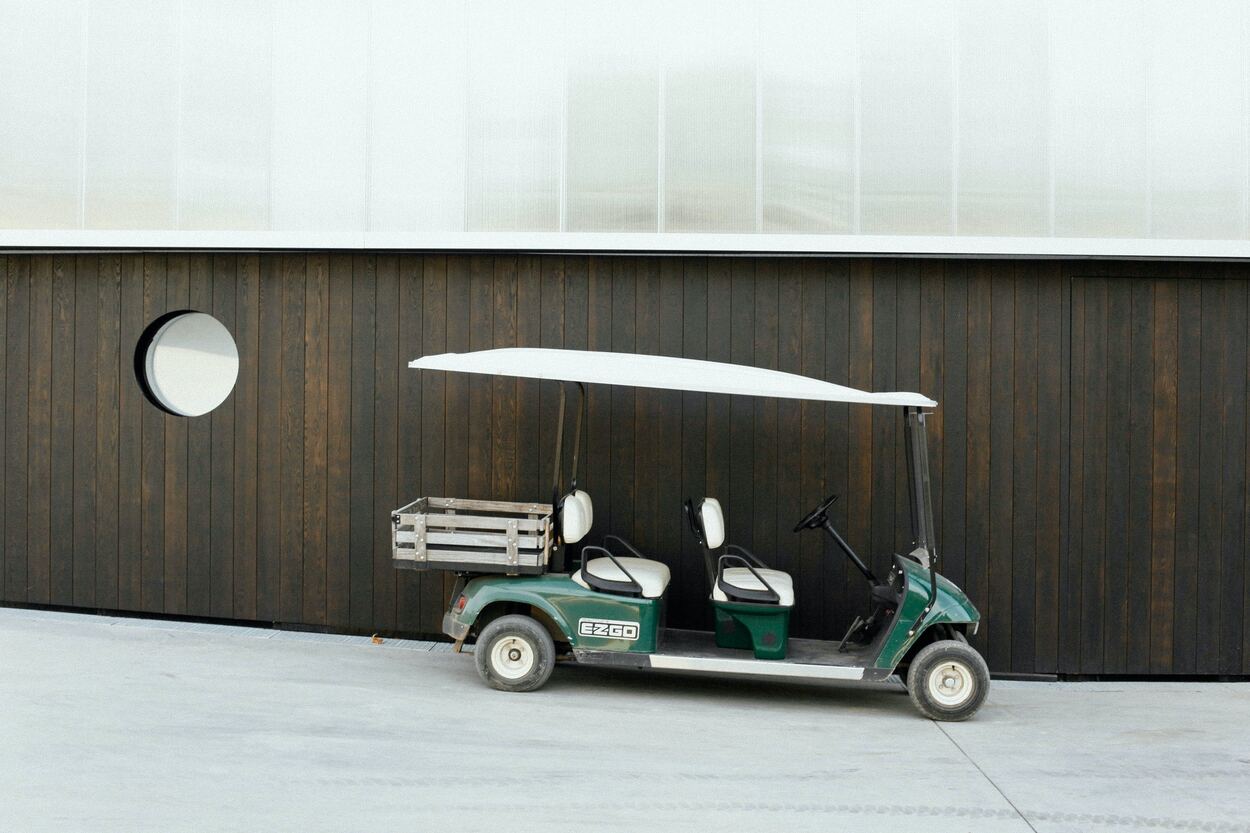

of Callaway ERC Triple
Track Golf Balls for
yourself or your buddy!
What is the best size door for a golf cart garage?
For those willing to make a brand-spanking new garage for their cart, experts recommend the door be 5X7 feet, 6X7 feet, 5X8 feet, or 6X8 feet. However, door sizes can vary, and the ones suggested are for buildings that will host golf carts independently.
You may have the dimensions all planned out, but what about the type of garage door you should go with? Again, your personal preferences come into play. There are several designs to choose from.
Each has its own unique appearance and differs in the way it opens. Some examples are:
- Roll-up doors
- Slide to the side doors
- Sectional doors (most popular in the US)
- Tilt-UP/UP and over canopy doors
- Side-hinged doors
- Tilt-UP/UP and over retractable doors.
| Roll-up doors | Great Insulators |
| Slide to the side doors | Ventilation |
| Sectional doors | Energy-efficient |
| Tilt-UP/UP and over canopy doors | Durable |
| Side-hinged doors | Aesthetically-pleasing |
| Tilt-UP/UP and over retractable doors. | Increased security |
How Thick should the garage door be?
One other thing to note is garage door thickness. It’s a good idea to get a thicker garage door in the case of colder climates. For whatever material you make the door out of, it’s recommended to add a ¼ ½ inches-thick layer of foam insulation on the inside, which is also considered the cheapest if you’re looking to save a buck or two.
I live in a colder climate, and springing for a well-insulated garage door makes an enormous difference in temperature. Sometimes, the temperature difference is 30 to 40 degrees based on what it is outside. This can be the difference between hanging out in your garage and never stepping foot in it on a frigid night.
For warmer climates, or if keeping your golf cart’s garage warm isn’t a significant concern for you, the door should be about 1/8 inches thick (especially for steel).

and apparel.
gear, accessories and apparel. (affiliate link)
How big of a shed do you need to store a golf cart?
If building a new garage from scratch doesn’t seem worth the effort, and any storage areas you already have can’t do the job, you could settle for something smaller like a shed to store your golf cart. You should build it no less than 12X12 feet to store other golfing accessories with your cart.
However, doing so will require much work and some carpentry skills. Also, don’t forget to check out your local zoning laws to avoid any legal headaches.
Once you have all your materials (wood, steel, drywall, whatever), tools, and the go-ahead from local authorities, start by measuring the foundation.
Can you store a golf cart in a garage?
Yes! After you’ve done that, move on to making the walls, roof, siding, and trim, and then the ramp that your golf cart will travel on. Doing all this can get complicated fairly quickly.
Final Say
It’s your shed or garage, so you can build it as big as you want (provided that zoning laws allow it).
7X15 feet is but a recommendation, a minimum size, if you will. Building bigger can also come with several advantages. Aside from the obvious extra storage space, there will be more room to ventilate to prevent any harmful buildups of hydrogen gas if you’re charging your electric golf cart.
Depending on your climate, install some insulation on your shed as well.



